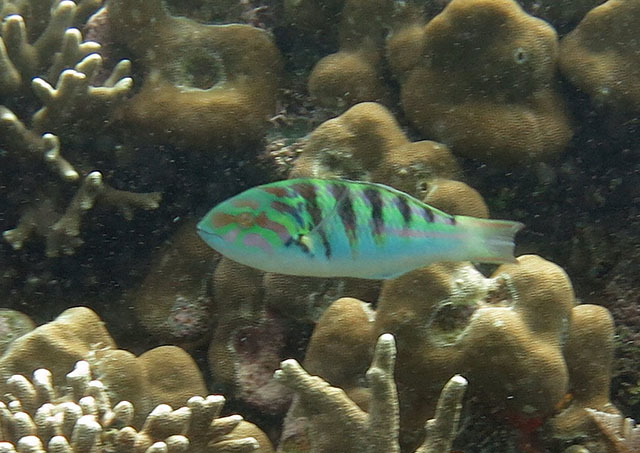| Labridae (Wrasses), subfamily: Corinae |
| 25 cm TL (male/unsexed) |
|
reef-associated; marine; depth range 0 - 15 m, non-migratory |
| Indo-Pacific: East Africa to the Line and Tuamoto islands, north to southern Japan, south to the Lord Howe and Austral islands. |
|
Dorsal spines (total): 8-8; Dorsal soft rays (total): 12-14; Anal spines: 3-3; Anal soft rays: 11-11. Color pattern remains similar with growth with terminal males becoming gaudier than primary males (Ref. 37816). Pale green with 6 dark bars, last two as saddles over the tail. Head with pink bands radiating from eye in large adults (Ref. 48636). |
| Occurs in shallow lagoon and seaward reefs, slopes and along drop-offs to moderate depths. Occurs in small, loose groups (Ref. 48636). Feeds on benthic and planktonic crustaceans, small fishes, and foraminiferans. |
|
Least Concern (LC); Date assessed: 12 June 2008 Ref. (130435)
|
| harmless |
|
Known from Bali (Ref. 8631, 47567) and Mentawai Islands (Ref. 27157). Also recorded from Raja Ampat Islands, Maumere Bay, Komodo, Manado and vicinity, Pulau Seribu, Pulau Bintan, Sangalakki Island, Togean and Banggai Islands and Pulau Weh; with an Indonesian distribution from Papua to Sumatra (Ref. 47567). Also Ref. 48636. |
Source and more info: www.fishbase.org. For personal, classroom, and other internal use only. Not for publication.

